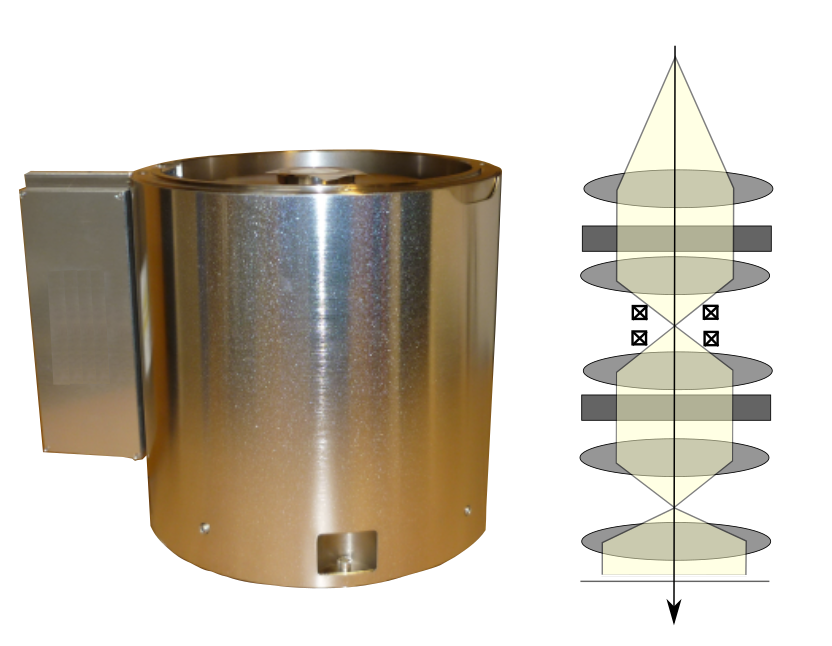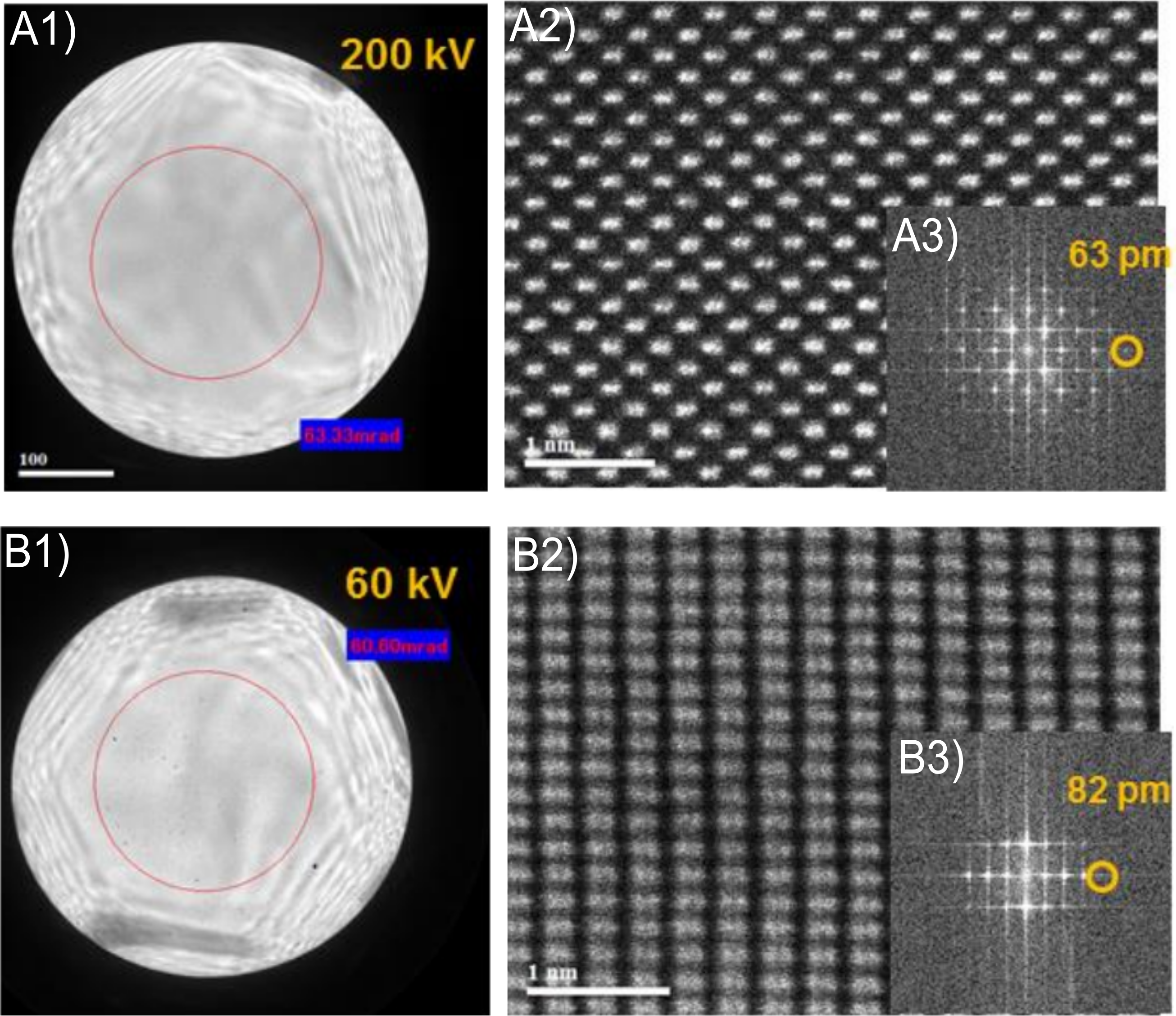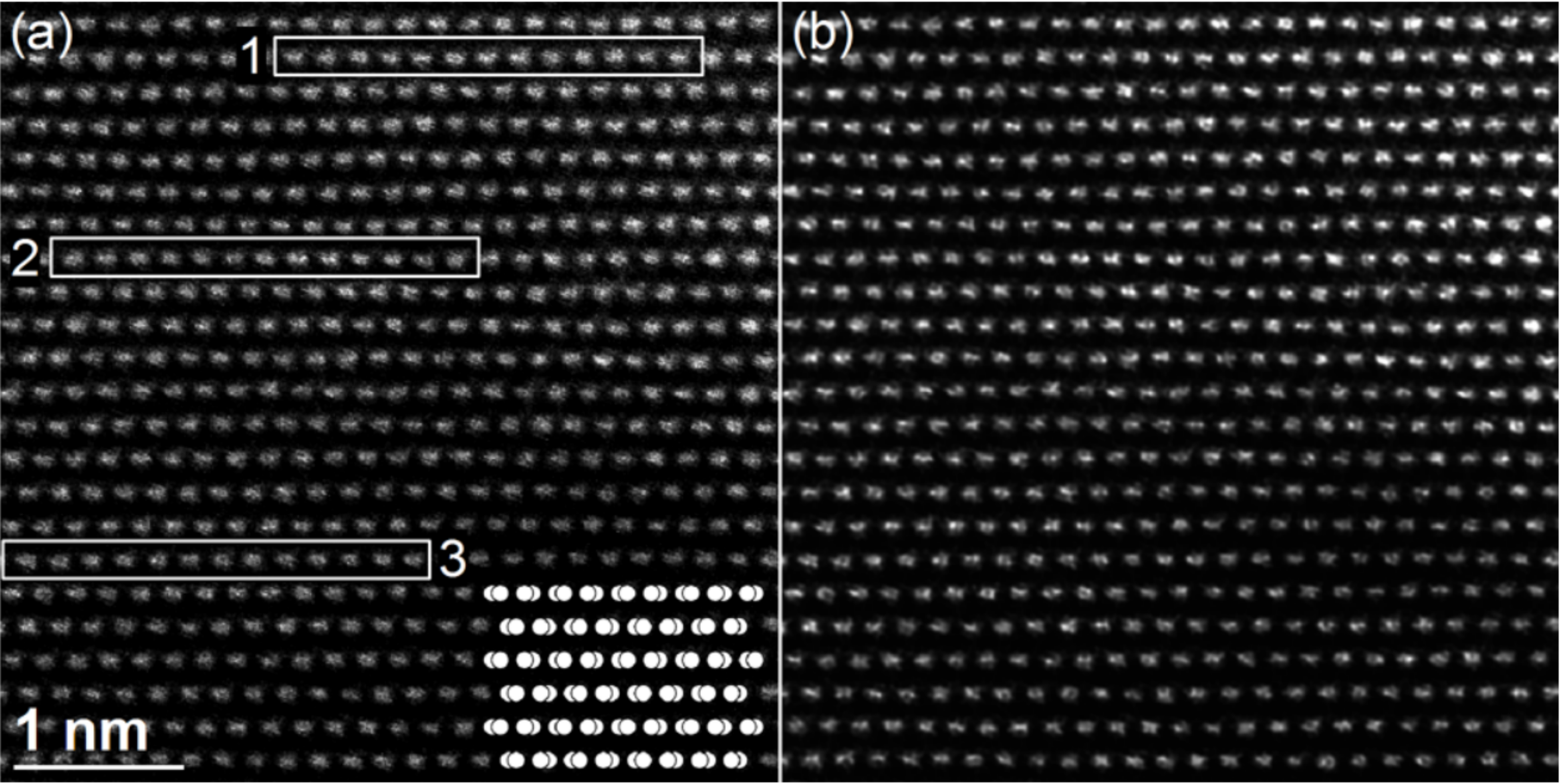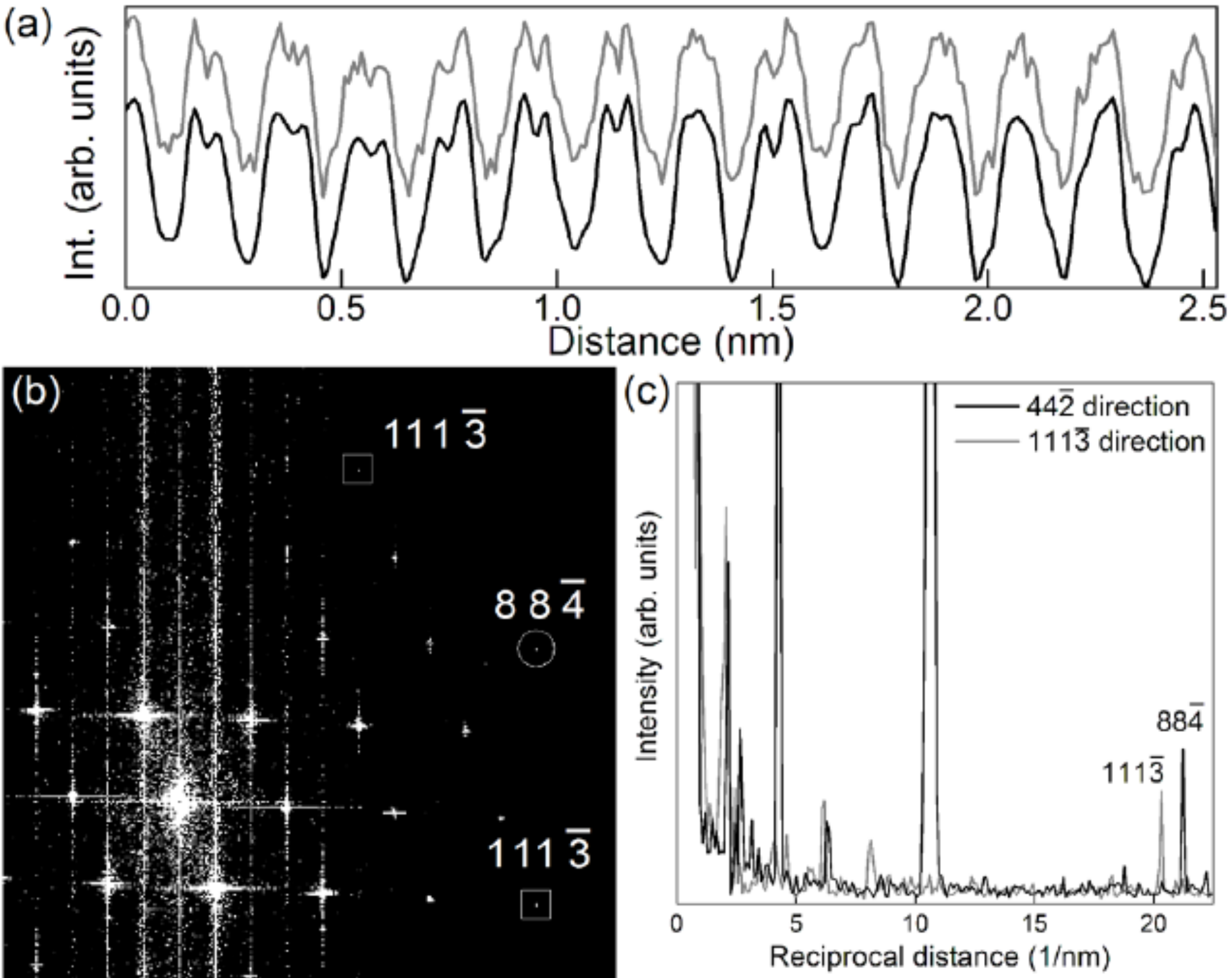DCOR / ASCOR – Cs correctors for STEM with optimized aberration correction for large aperture angles

DCOR / ASCOR – Cs correctors for STEM with optimized aberration correction for large probe semi-angles
The CEOS Cs corrector for STEM "CESCOR" was a huge success. However, new applications with demand for larger aperture angles require a reduction of the intrinsic six-fold astigmatism. This can be achieved with the DCOR/ASCOR STEM corrector, which is the advanced development of our proven CESCOR. The optimized hexapole design the DCOR/ASCOR corrector combines the benefits of the CESCOR (simultanious improvement of resolution and increased beam current) with an almost complete suppression of the six-fold astigmatism A5. New degrees of freedom allow for a complete correction of all axial aberrations up to including 4th order. This enables highest resolution STEM images with semi-convergence angles beyond 40 mrad in the high-voltage range between 30kV and 300kV.The enlargement of the aberration-free probe aperture angle additionally improves the depth-resolution, i.e. the STEM image's sensitivity along the z-axis, and therefore enables a certain 3D resolution in STEM focus series.The DCOR/ASCOR performance, especially the suppression of the intrinsic six-fold astigmatism A5, is independent of the microscope's high-tension. Consequently, the advantages of this corrector are fully available at all accelerating voltages in the same way. You can find more information about DCOR and ASCOR in our publications
and
Features:
- Advanced Hexapole-type Cs-corrector for STEM
- Increased resolution and simultaneously increased beam current compared to conventional STEMs
- Correction of all axial aberrations up to 5th order: C1, A1, B2, A2, C3, S3, A3, B4, D4, A4, C5
- Minimization of the intrisic six-fold astigmatism:|A5| < 0.2 mm
- Equally good STEM performance between 30kV and 300kV for STEM images with probe semi-aperture angles above 40 mrad
- Compatible with the following STEMs: TFS Titan 80-300 (DCOR) , JEOL JEM-ARM200F / NEOARM (ASCOR). Others on request. Others on request.
Specifications:
- Device dimensions: 309 x 360 x 360 [mm] (DCOR)
- Device dimensions: 255 x 407 x 323 [mm] (ASCOR)
- Mode: STEM
- High voltage range: 30kV - 300kV
Application:
- High-resolution STEM for state-of-the-art electron microscopes
- Depth resolution ("depth sectioning") in monochromated STEM
Contact
Do you have any questions about the product or the application and extension for your e-beam system? Please contact us at info@ceos-gmbh.de

Fig 1: Cs-corrected Ronchigrams and STEM images:The Ronchigrams (A1) and (B1) of an amorphous object illustrate the large aberration corrected angular range for the STEM probe for the respective high-tensions of 200kV and 60kV. In both cases the semi-convergence angle is free of disturbing aberrations to ~60 mrad. The related high-angle annular dark-field (HAADF) images of a [211] GaN sample (A2) at 200kV and of a [112] Ge sample (B2) at 60kV demonstrate the outstanding STEM resolution: in both cases, the individual atom columns in the narrow dumbell structures is resolved. The corresponding diffractograms verify the required reflections for 63 pm at 200kV (A3) and for 82 pm at 60kV (B3). The images have been acquired in a Cs-corrected JEOL JEM-ARM200CF with ASCOR Cs-corrector. M. Watanabe, T. Nakamura, T. Ishikawa. Improvement of Imaging Performance with a New ASCOR Probe-Corrector in a 200 kV JEM-ARM200CF. Microsc. Microanal. 22 (Suppl 3), 2016.

Fig 2: Cs-corrected ADF STEM images of a Ge [114] sample at 300kV with a DCOR. (a) Raw image data with an atomic model in the lower right corner. (b) In the low-pass filtered image, the separartion of th 47 pm dumbell distance in between the individual projected atomic columns becomes clearer. The images were recorded with the TEAM 0.5 microscope at the Lawrence Berkeley National Laboratory (TFS Titan 80-300 with DCOR for STEM and CETCOR for TEM). R. Erni, M.D. Rossell, C. Kisielowski, U. Dahmen, Atomic-resolution imaging with a sub-50-pm electron probe, Physical review letters 102 (9) (2009) 096101.

Fig 3: (a) The line profiles along the atomic rows from the raw data Fig.2a (grey) and the low-pass filtered data of Fig.2b (black) demonstrate the resolution of the 47 pm dumbell structure. (b) The diffractogram subarea of the the Ge [114] image (Fig.2a) reveals very high-frequency reflections: the radial plot (c) of the diffractogram clearly shows the 884 reflection corresponding to 47 pm and the 1113 reflections corresponding to 49 pm.This work for the first time demonstrated information transfer below 50 pm with a Cs-corrected STEM. R. Erni, M.D. Rossell, C. Kisielowski, U. Dahmen, Atomic-resolution imaging with a sub-50-pm electron probe, Physical review letters 102 (9) (2009) 096101.

